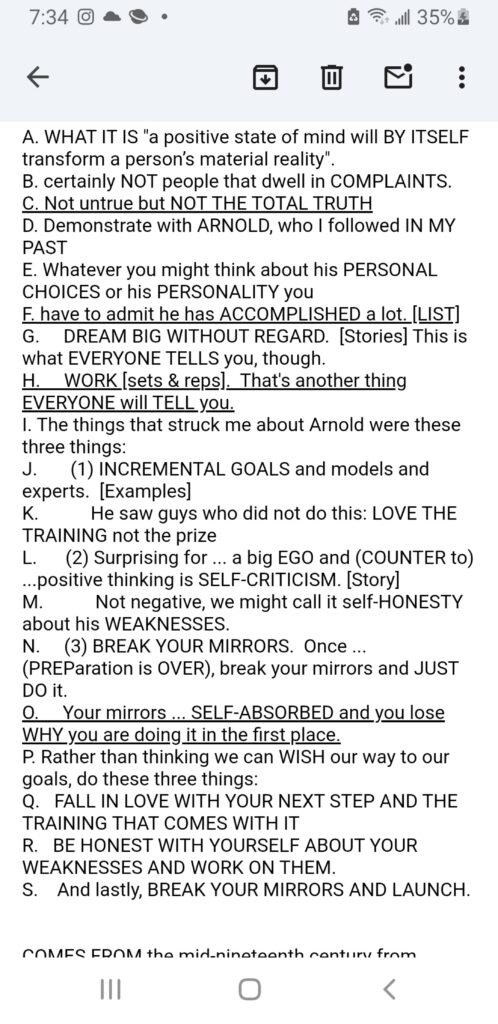Hi everyone,
There have been several questions about using notes for speeches. In this article, you see my speech, then the actual notes I used, and then some thoughts on using notes.
Here is a screen shot of my notes from my phone:

The note is designed to be one "page" on a phone or laptop. I tend to not use notes at the onset of a speech so having to find where I am in my notes becomes a problem. With one "page" I don’t have to scroll to find where I am.
I try to make the notes one-line-per-speech-group. I didn’t succeed here (it would be easier on anything other than a phone). Having one line per speech group is necessary with phone notes. With laptop or paper notes, it means your eyes are always going to the same place and never having to scan from the end of one line to the start of the next in order to get your next thought. Since I didn't fit everything on one line here, the letters at the left of each line serve as a back-up.
Some things about the format:
If you want to modify this approach to your own purposes, you could use italics, different fonts, etc. I would keep it relatively simple as you don’t want to have to figure out your notes up there.
At the very bottom you can see it goes off the screen a little. That’s a space for facts and verbatim quotes. People don’t mind you reading those. If I need to do that, I can look at the letter where I leaving off (“section F”) so I can get back to where I was quickly.
For people that heard my memory system (a speech a while back): here I wanted to be able to refer to lines in the notes for examples. To use the number system with this, I’d only use 10 or fewer labels. That means some areas would not have a number. I would indent those so that the section as a whole was aligned.
Lines Q-S are my conclusion. Generally with speeches I will have memorized my opening and my ending. I did 'all caps' here to show how three sentences in a row of all caps destroys its usefulness. You could, however, use all caps for entire sentences that you want to say exactly as written (you could also use quote marks like I do in line A in my notes).
It is best to print your notes out. Paper is easier for you visually. For print, there’s no harm in having more than one page (I just did one page here for demo purposes). Keep the sections together and not break them across pages. Make the page numbers prominent, ideally on both the top and bottom of the page. Finally, it’s better not to staple the pages so you can go through the pages more easily.
For printed notes there is also the three-column technique (your notes would be in landscape for this):
| This narrow section contains the short summary notes, like I did above |
This broad section is your speech written out. For this, you can also include the caps, and bolds, and underlines and anything else that helps you.
Shorter paragraphs are your friend here, as you want to mainly use the summary notes at the left. |
This narrow section are notes to yourself about how to present, either about presenting the specific section or general notes (“smile”, “make sure to pause”) |
Another option is to use an index card system. You could do the same things I did above to create a short summary note for each card. Save a large corner on each card and the last thing you do for prep is to number each card prominently.